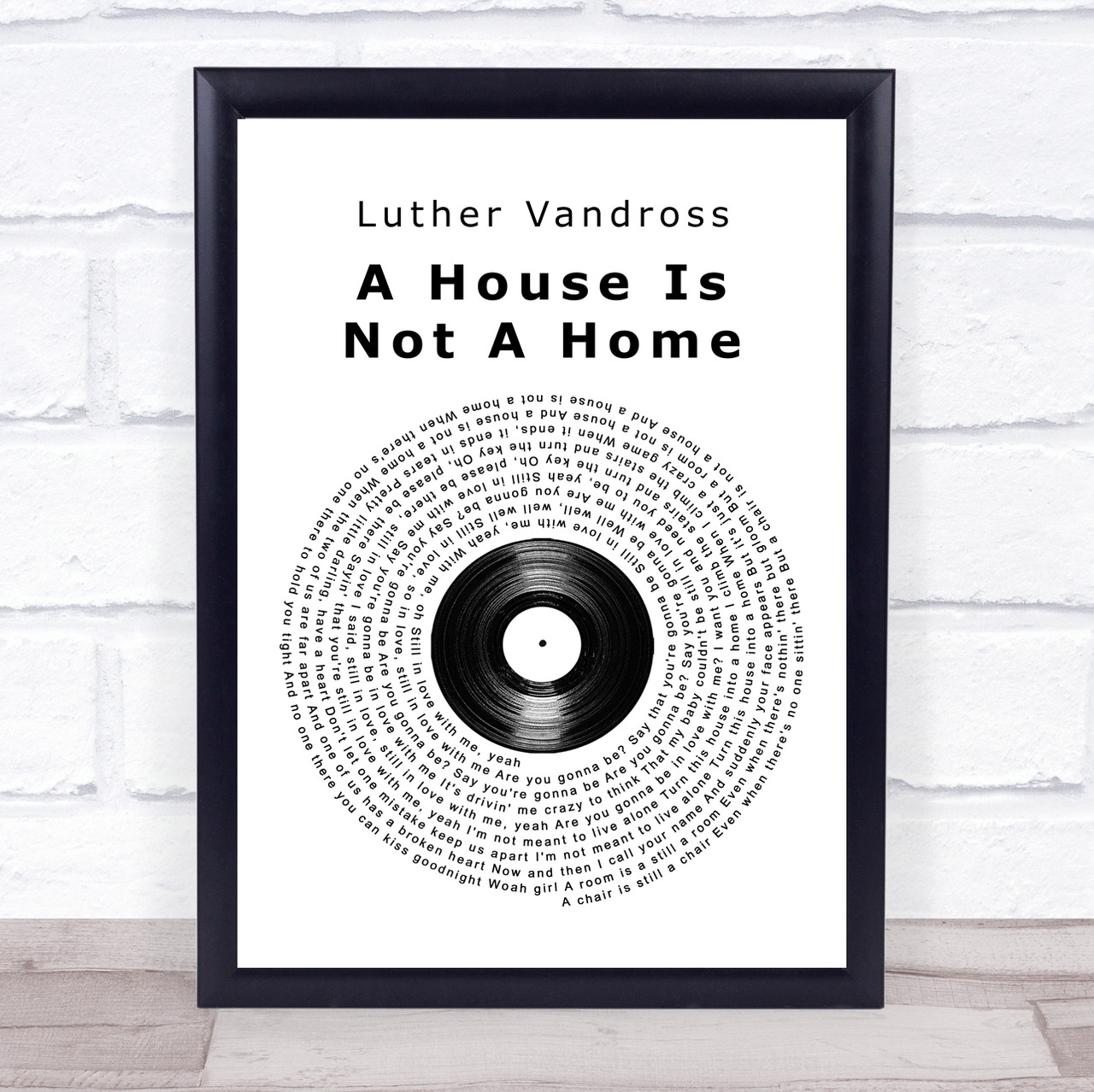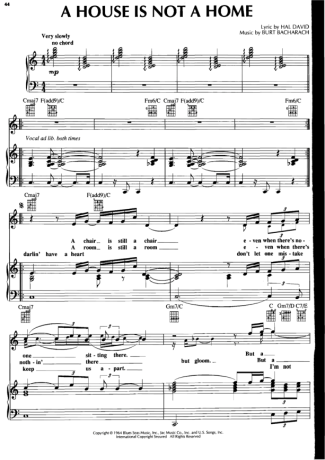

“Do you know the way to San Jose?” Very trying to be non-racial, so to speak. She had a very specific style that was very specific to that time. GR: Well, she was really, really influential. KM: I feel like she had a number of songs that were written for her, but that other people did better. Sometimes, it’s how you enter, and I entered from her version, so her version sounded kind of eh. GR: The Dionne Warwick version of “A House Is Not a Home” didn’t even compare for me. And I think what makes “A House Is Not a Home” that record, is first off, it’s Luther Vandross, and him singing anything, it’s like if he sang it, it would be true. Like Isaac Hayes doing another Burt Bacharach-Hal David song written for Dionne Warwick, “Walk on By.” Everyone looks to Isaac Hayes’ version as that piece. Not to diss the original versions, but the just becomes that standard. RE: “A House Is Not a Home” it falls into a well of great covers. His musical acumen meant that he could bring out nuances in fairly straightforward songs-“Since I Lost My Baby,” “Superstar,” “Power of Love”-and make them resonate, fully his own. In addition to arranging vocals for David Bowie and writing jingles for Juicy Fruit and McDonald’s, he made a name for himself early on as one of the great re-interpreters of song. Vandross was indeed a smooth performer and a talented arranger. KM: So what was it like when you first saw Luther move?

There was a whole decade where I never knew how he walked, or anything like that. He was a still being on a 12-inch vinyl album cover until the 90s. It’s not like today where you can look at YouTube. Then I was finally able to see Luther Vandross. They never really got into a rhythm of establishing Luther Vandross as a star.

It’s ‘81, MTV showed up around that time, and they weren’t playing black artists. I don’t think I was really able to appreciate the song until later because of the racist nature of what MTV was at the time. I just know that that’s where I first heard it, and that’s what I associate it with. were like new artists, at least in my neighborhood I can’t speak for everybody.

He was that soundtrack, that holdover where these black folks who were living in mostly black communities in the 70s were now living in mostly white communities in the 80s. And being African Americans in a middle-class white neighborhood, it was interesting to see what kind of black artists broke through when you’re in that neighborhood, when you’re not around a community of your own that can hip you to the next artist. And a year later, we moved to Franklin Lakes, New Jersey. Raydar Ellis, 33: My family was in White Plains at the time. So I had felt that losing of someone I thought was-I don’t know if I knew the word “soul mate” at the time, but that’s what I felt. They used to have couples only, and she was the one girl I could skate with. We used to roller skate together at the Rich Roller Skating Rink. I remember, there was this girl who lived in New York from Michigan, and she left to go back to Michigan. Guy Routte, 45: I had felt the longing of losing a girl that I really dug. It was a good record, seven minutes long, and you could take a rest. And if you were a DJ, you wanted a long slow record so you could rest. Kyla Marshell: What was your relationship to “A House Is Not a Home” when it first came out?ĭerek Wright, 62: After you had danced, like, 20 records in a row, you wanted a slow record. of WAR Media, and co-host of the new Riot Radio Show. I talked to three Luther lovers of three different generations to get their perspectives: Raydar Ellis, producer, DJ, and professor of hip-hop at Berklee College of Music Derek Wright, a Boston-area DJ circa 1981 and Guy Routte, C.E.O. What is it about Vandross’s version-about Vandross-that made it so special? Yet by the time Vandross had released this song, written by Burt Bacharach and Hal David for Dionne Warwick, it had already been recorded over a dozen times, by Ella Fitzgerald, Barbra Streisand, Dusty Springfield, Stevie Wonder, and many others. “A House Is Not a Home” was an aching, pleading, seven-minute entreaty that felt- still feels-real. The final track on his 1981 debut album, Never Too Much, it was never released as a single, yet became a sleeper radio hit, one movement of the ever-rumbling quiet storm. But whether you were Team Big Luther or Team Slim-Down Luther, we must all agree that no other song better captures the glory and greatness of Vandross than “A House Is Not a Home.” He was the rare artist who had it all: the voice, the stage presence, and countless hits. An unparalleled singer, songwriter, and producer, Vandross released 13 albums, recorded hundreds of songs, and won eight Grammy Awards in his lifetime. Today, July 1, marks the 1o-year anniversary of the death of Luther Vandross, who passed away in 2005 after suffering a heart attack.


 0 kommentar(er)
0 kommentar(er)
